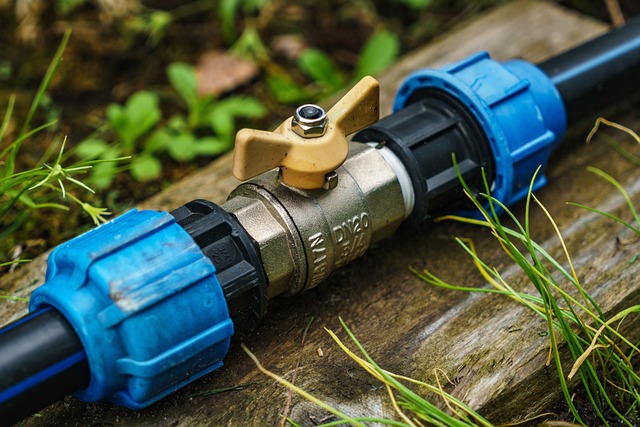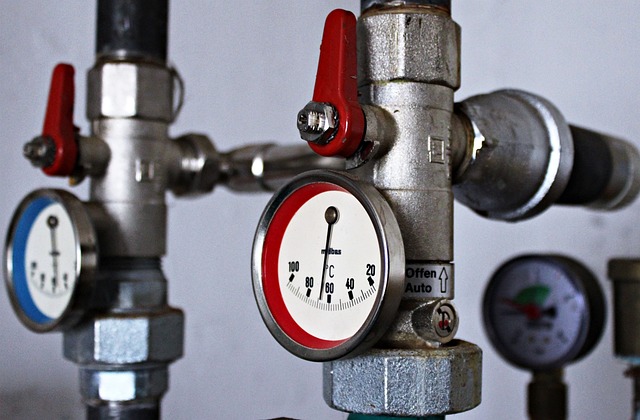Low water pressure, a common household nuisance, can disrupt daily activities from showers to cooking. Understanding the Causes of Low Water Pressure—such as leaks, faulty valves, mineral buildup, or outdated plumbing—is crucial for effective troubleshooting and resolution. By identifying the root cause, homeowners can address issues with simple cleaning solutions or longer-term repairs, restoring optimal water pressure and enhancing overall comfort while conserving water resources.
Low water pressure can disrupt your daily routine, from taking a shower to running household appliances. Understanding the root causes is key to effective fixes. This article delves into the seven most common reasons behind low water pressure, ranging from leaks and clogged pipes to elevation issues and faulty regulators. By identifying these causes, you’ll be equipped with practical solutions to restore optimal water pressure in your home.
- Understanding Low Water Pressure: The Initial Assessment
- – Defining low water pressure and its common symptoms
- – The impact of low water pressure on daily activities
Understanding Low Water Pressure: The Initial Assessment

Low water pressure can be frustrating, making everyday tasks like showering or doing the dishes less enjoyable. Before diving into specific fixes, it’s essential to understand the potential causes behind this issue. Start by assessing your home’s plumbing system and considering some initial factors:
1. Water Supply Line Issues: Check if there are any visible leaks or damage along the water supply lines leading to your home. Even a small drip can significantly reduce water pressure over time.
2. Valve or Fixture Problems: Inspect all valves and fixtures for any leaks or obstructions. A faulty showerhead, aerator, or faucet can restrict water flow, resulting in low pressure.
3. Water Pressure Regulator Malfunction: Some homes have a water pressure regulator that maintains consistent pressure. If it’s malfunctioning, it could be the root cause of your low pressure issue.
4. Hard Water Buildup: Mineral deposits from hard water can accumulate inside pipes and fixtures, narrowing them over time, leading to reduced water flow.
5. Clogged Pipes or Drainage Systems: Clogs in your pipes or drainage systems can restrict water’s path, causing pressure to drop.
6. Water Main Issues (External): In some cases, low water pressure could be due to problems with the main water supply lines serving your neighborhood.
7. Outdated Plumbing System: Older plumbing systems may not be designed to handle modern water demands and pressures, leading to reduced efficiency.
– Defining low water pressure and its common symptoms

Low water pressure is a common issue that can leave your daily routines disrupted and your plumbing system under strain. It’s typically characterized by a lack of force in the water flow, making everyday tasks like showering, doing the dishes, or even filling a glass with water a struggle. Symptoms often include weak or intermittent water flow from faucets and showers, and it might take longer than usual to fill up a bathtub or sink. This problem can be frustrating for homeowners and tenants alike, prompting them to investigate potential causes of low water pressure.
Several factors can contribute to this issue, ranging from simple fixes like mineral buildup in pipes to more complex problems such as leaks or faulty valves. Understanding these causes is the first step towards resolving the issue effectively. By identifying the specific problem, homeowners can choose the appropriate fix, whether it’s a quick cleaning solution or a longer-term repair, ensuring optimal water pressure is restored throughout their homes.
– The impact of low water pressure on daily activities

Low water pressure can significantly impact your daily routine and overall comfort. From taking a shower to doing laundry or cooking, water pressure plays a crucial role in various household tasks. When the pressure is low, it becomes a nuisance and may even lead to increased time spent on simple activities. Imagine a morning routine where a quick shower feels like a slow drip, or doing the dishes takes twice as long due to insufficient water flow. These everyday inconveniences can add up, creating a less-than-desirable living environment.
The causes of low water pressure are often multifaceted and range from issues within your home’s plumbing to problems with the main water supply. Identifying the root cause is essential in determining the most effective solution. Common factors include outdated pipes, faulty valves or fixtures, water leakages, incorrect pressure regulator settings, or even a buildup of mineral deposits in pipes and fittings. Addressing these causes of low water pressure can restore optimal pressure levels, enhancing your daily experiences and ensuring a more efficient use of water resources.
Low water pressure can significantly disrupt your daily routine, but understanding the causes is the first step towards fixing the problem. Whether it’s a leaky faucet, an air bubble in the system, or a more complex plumbing issue, identifying the specific cause is key. By addressing these seven common causes of low water pressure, you can restore optimal flow and enjoy your home’s full comfort potential once again.
